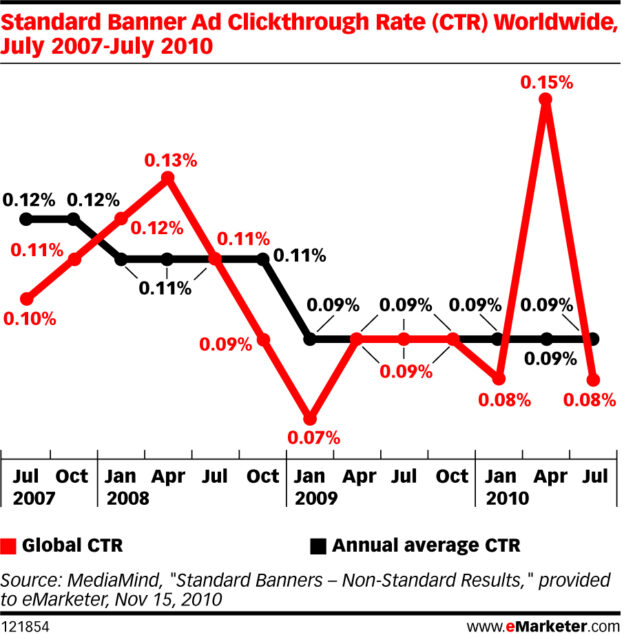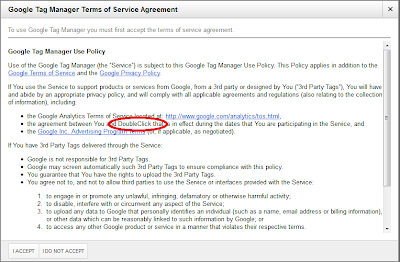Ah tax season…with the greedy hand reaching for more tax money around the country (especially in Illinois), digital media today is arguably one of the few areas of Internet commerce that is unmolested by government regulation. It is amazing that so many consumers have benefited from the abundance of free information and innovative services provided by private industry. Management consulting firm, McKinsey recently estimated that consumers enjoy about $145MM per year worth of free content across the US and Europe alone.
Like most major media today – this free content is subsidized by advertising. Going forward, McKinsey expects this to nearly double in just 4 years due to broadband adoption. An interesting implication of McKinsey’s study for digital media companies in particular, is that it suggests that consumers may be willing to tolerate both advertising and more pay services.
Good news! For digital media companies they have a great opportunity if they can find the right balance for them and their audience – but are they up for it? With the hoopla about privacy, threats of “Do Not Track” regulation and developments in browser cookie blocking, it has become painfully apparent that individual digital media companies may not only have shot themselves in the foot but need to take action.
Well, How Did We Get Here?
It wasn’t always this way, during the 90s Internet boom, times were great for digital media – they were the darlings of Wall Street. Hockey stick ad revenues came with leveraging offline brands. Astronomical valuations thanks to investor’s fervor made it all seem so easy. Attempt to pay wall digital media continued to fail. Why charge for access when the advertising model realized growth from more users and from increased interest from advertisers?
Then, the 2001 crash came and money got tight. Scarce capital and advertising sales forced a more prudent, often direct-response approach to digital advertising. Paid search with its manufactured precision boomed while display media floundered. At the same time, little-noticed improvements in display ad targeting technologies continued to get more powerful…and more complex. Ad networks blossomed to help make markets, bundle sites, audiences and do much of the heavy-lifting of ad targeting.
Meanwhile, the recovering ad business models demanded more traffic: keep hitting the milestones, sales quotas and Internet rankings essentially at all costs. At the same time these promising new targeting technologies were being implemented, digital media legal teams dutifully but quietly continued to revise their Terms of Service agreements to reflect the changing methods. The trouble is that almost nobody read them (except class action lawyer Web bots). More importantly, risking the potential competitive hit in traffic would be a non-starter. The herd mentality that all traffic is sacrosanct created an atmosphere where burying the TOS became the norm.

Fast forward to today and think Terrence Kawakja’s Display Ecosystem, with it’s dynamic players and shifting definitions. It is safe to say that the advances in behavioral, dynamic creative, site retargeting, data-sharing and use of purchased data represent a major part of the industry today. Many of these systems rely entirely, if not in part on their ability to target cookies and identify specific machines. Sure, there are differences between 1st and 3rd party cookies but this is a nuance likely to be lost in the heavy-hand of government regulators. Deleting all your cookies is not practical and can be annoyingly inconvenient for users. One promising alternative, machine fingerprinting methodology raises other privacy issues.
Consumers: Something for Nothing?
Not much is free in life – except it seemed online media it seemed. All-you-can-eat digital media business models made it easy for users to consume content with abandon – seemingly with no strings attached. And by effectively putting the honus on the average user to locate, read and understand the TOS, digital media companies routinely obscured the intrinsic trade-off. This was no accident, but turned out to be colossally short-sighted. Reading the fine print was certainly not encouraged.
At the same time, users probably didn’t care because sites encouraged instant gratification offered by delivering consuming professionally produced branded content and innovative online services for free. With bragging rights added at stake, users became active participants in being there first.
Unfortunately, the proliferation of the above strategy by created a wider phenomenon:
- It just about completely obscured the implicit (if not explicit) value exchange across many sites; this resulted in digital media individually and in the aggregate devaluing their own content
- By not being more transparent about the tracking techniques that are used to subsidize user’s consumption. Despite TOS being there and detailing everything, the perception is that digital media and their corporate advertisers have something nefarious to hide.
- Together, both have allowed fringe elements to reframe a private business arrangement
Who’s Content Is It Anyway?
Over the last few years, loud online activists with collectivist agendas have hi-jacked the private relationship between consumers and digital media. The small but vocal and technically sophisticated minority rages on about privacy. Some even take it a step further to prevent ad targeting and ad delivery.
Perhaps to equivocate their latent content theft, these activists routinely delude consumers to believe that information wants to be free are that all are entitled to consume from private hands without paying or giving up anything for it. In essence, the act of consuming commercial content is being positioned as about “privacy” when it is really about something for nothing.
Like anything people have gotten for free for a long-time, its value is now perceived to be effectively zero; a variation on game theory’s tragedy of the commons. Not surprisingly, they have gotten very spoiled and a growing number now feel entitled to an inviolate surfing session.
We’re From the Government, We’re Here to Help You
More disturbing, is that these same fringe activist types are also clamoring for the federal government to step in and regulate tracking and data collection in a way that other media and businesses have never been. Big government now even purports to help citizens manage their data trail better than the private sector; their National Strategy for Trusted Identities in Cyberspace program is right out of George Orwell. Some are calling this cookiepocalypse, i.e. the end of cookie-based ad targeting and site measurement.
Even within the industry ranks, there are some paradoxically misguided and/or very frustrated people that have been bullied into submission. They actually think regulation by the federal government is a good idea to end the uncertainty of it all. Think Stanford prison experiment.
Have we not seen this movie before? Junk mail, Do Not Call List, Terrorist database, pedophiles registries, FEMA and the list goes on. Rest assured that with high-minded politicians looking for a populist cause to latch onto the likelihood of unintended consequences for the digital media industry is alarmingly high. Trusting the federal government to be the potential monitor and arbiter online activity should be chilling to any liberty-minded citizen.
And yet user’s expectation of total privacy and entitlement remains in the wake of digital media’s self-mortgaged future. Armed with new Web browsers (thanks to Microsoft and Mozilla) and nascent black lists, recently emboldened users demand to have their cake and can eat it too. Certainly, over time these targeted ad defeating technologies will become easier to use and more widespread
And that limits the efficacy of a digital media industry that as we’ve seen is largely based on cookies today. If digital media has a plan, advertisers would like to know about it…any day now.
Next Post, Digital Media Lesson Part II – Saying No to Freeloaders
























